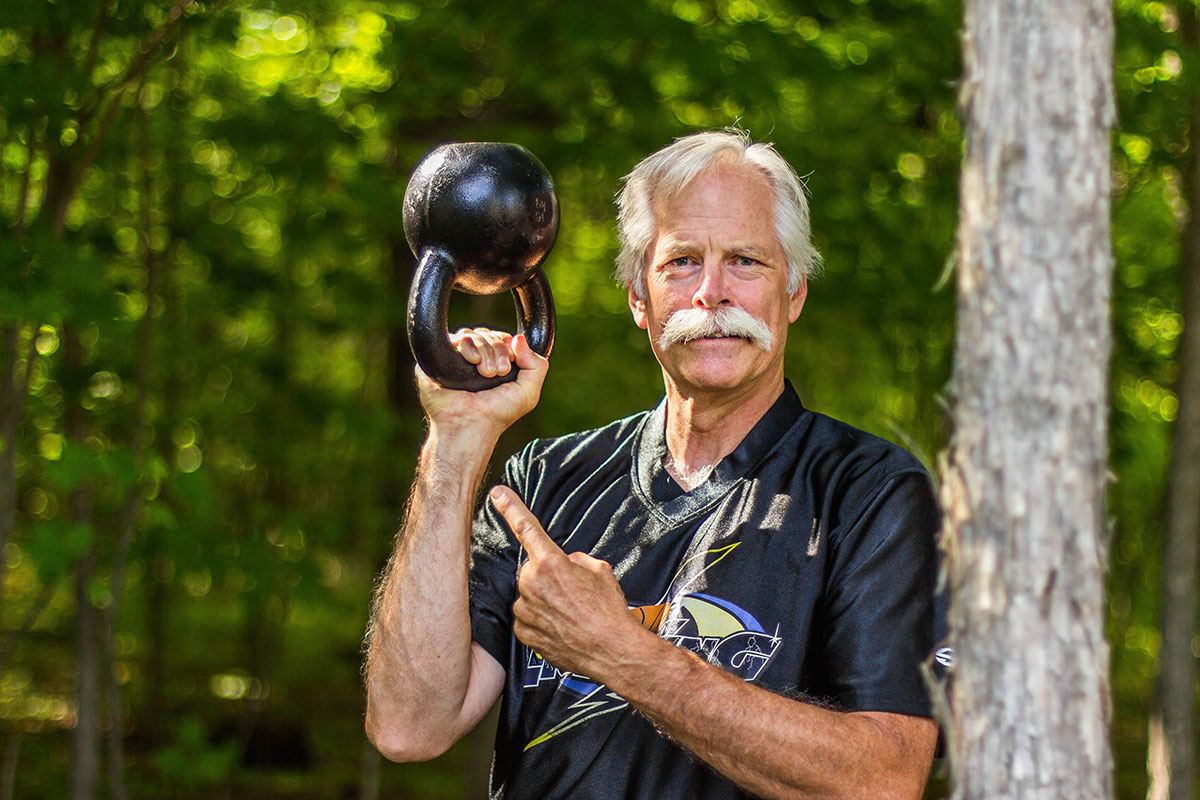Spine Health and Core Performance
Dr Stuart McGill is a leading spine researcher and core performance expert who has written numerous books on spine health and core conditioning best practices. I first learned of his work early on in my practice as a physical therapist when a colleague shared one of his books: Low Back Disorders. His approach to spine health and core performance is fairly basic; identify aggravating factors that trigger pain, focus on hip mobility, core stability and train the central nervous system to groove fluid movement patters such as hip hinging that place the body in optimal alignment to generate force and control center of gravity. Over Dr. McGill’s 40-year career he has identified three core exercises which he considers to be “non-negotiable” when it comes to back health: The modified curl up, the side plank and the bird dog. I prescribe these exercises and their variations to nearly every client/patient I have whether it be a high-level athlete, back pain patient or someone just starting an exercise program. Let’s take a brief look at some of the coaching points and benefits of each exercise.
- Modified Curl Up: The modified curl up helps you or your client get in touch with the core and eventually teaches how to fire the core on command. To perform the modified curl up lay in a supine position with one knee bent and hands underneath the lumbar spine (which helps maintain a neutral spine position) lift the head and shoulders one inch off the ground straight up towards the ceiling and hold for 10 seconds. The modified curl up is NOT a crunch, which tends to place stress on the cervical spine and places the spine in a poor postural position: remember to lift the head and shoulders STRAIGHT up towards the ceiling. As a coach I often place my fingers right underneath the floating ribs, if the client properly engages the anterior core, your fingers should “pop” out from underneath the ribs! Performing 2-3 sets alternating which leg is in the bent position is a great way to get the core firing and help the client identify the neutral spine posture.
- Side Plank: The side plank is considered by most strength coaches to be a “Gold Standard” lateral stabilization exercise. Get in a side-lying position with elbow at a 90 degree bend off the torso, top foot in front of bottom with a heel to toe orientation. Engage the muscles around your pelvis squeezing the legs together to “lock down” the pelvis, fire the anterior core (just like you did on the modified curl up) and raise your hips off the ground into a plank position. Remember, the plank term describes a stiff board; that is the alignment you should emulate in this drill. Occasionally, the side plank position can hurt the elbow, in that case use a foam pad. If the client struggles modify the plank by having them bend the knee’s and elevate from the bent knee position. McGill recommends holding the side plank with perfect form for 10 seconds then taking a 3 second rest to reset and then repeating for 3 sets per side.
- Bird Dog: The final exercise in the big three series is the bird dog. The bird dog challenges the core in the transverse plane of motion and helps teach how to disassociate the hips from the spine. Get in the quadruped position. Here’s a little trick prior to doing this exercise: perform an end range angry cat position and an end range old cow position then settle in the middle (for most people that is the neutral spine position.) Hold that rigid neutral spine position while extending the opposite leg and arm, holding for 10 seconds at the end range. Watch for spine movement and lateral tilting of the pelvis. I often use a dowel to help instruct this move (keeping the dowel on the back of the skull, mid back and sacrum) to ensure the torso provides a stable platform for the hips and shoulders to move around. Repeating a 10 second hold 3 times on each side will help to build capacity in the core muscles.
One of my favorite cliché sayings from the strength and conditioning community is: “It’s impossible to fire a canon from a canoe!” In other words, without a stable spine and engaged core, it is very hard to generate force through the body. Including McGill’s big three into a warm up or strength circuit will help you or your clients get in touch with the neutral spine position, stabilize the spine for bigger lifts and bullet proof the core! Thank’s for joining and until next time: “Get After It Everybody!”

